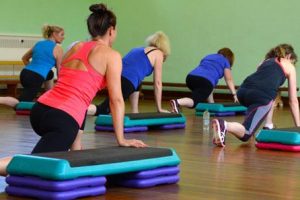Fitness enthusiasts and athletes continually seek innovative ways to enhance their workout routines. One such approach that has gained attention in recent years is inverse training. Inverse training involves changing the order of exercises within a workout session to maximize the benefits and achieve better results. This article delves deep into the world of inverse training, exploring the principles behind it, its advantages, and how to effectively incorporate it into your fitness regimen.
Understanding Inverse Training
Inverse training, also known as “reverse exercise order,” flips the traditional sequence of exercises within a workout. Typically, workouts start with warm-up exercises, followed by larger compound movements, and finish with isolated exercises or stretching. Inverse training challenges this conventional order, advocating for starting with isolated, single-joint exercises and progressing to compound, multi-joint movements.
The Science Behind Inverse Training
The theory behind inverse training is based on principles of muscle activation and fatigue. By starting with isolated exercises, you target specific muscles, exhausting them before engaging in compound exercises. This approach aims to prime and pre-fatigue specific muscle groups, forcing them to work harder during compound movements, ultimately leading to greater muscle engagement and growth.
Advantages of Inverse Training
- Enhanced Muscle Engagement: Inverse training pre-fatigues specific muscles, ensuring they are actively engaged during compound exercises. This can lead to more significant muscle growth.
- Improved Mind-Muscle Connection: Starting with isolated exercises allows you to establish a better mind-muscle connection, enhancing your awareness of muscle engagement during compound movements.
- Variation: Inverse training provides variety in your workout routine, preventing plateaus and keeping your workouts mentally stimulating.
- Efficiency: By focusing on muscle groups that need improvement, you can optimize your time at the gym, working more efficiently toward your fitness goals.
- Injury Prevention: Better muscle engagement and control can contribute to improved form and reduce the risk of injury during compound exercises.
Implementing Inverse Training
- Warm-up: Begin with a standard warm-up routine to prepare your body for exercise. This can include light cardio, mobility drills, and dynamic stretching.
- Isolated Exercises: Start with isolated, single-joint exercises that target specific muscle groups. For example, if you are working on your chest, begin with chest flies or tricep extensions.
- Pre-Fatigue: Perform isolated exercises with enough intensity to pre-fatigue the target muscle group. This ensures they are actively engaged in subsequent compound movements.
- Compound Movements: Move on to compound exercises that involve multiple muscle groups, such as bench presses or squats. Because the target muscles are already fatigued, they work harder during these exercises.
- Mind-Muscle Connection: Focus on the mind-muscle connection during compound movements. Pay attention to the muscles you are working and maintain proper form.
- Cool-down and Stretching: Conclude your workout with a cool-down routine and static stretching to improve flexibility and prevent post-workout muscle tightness.
Sample Inverse Training Routine
Let’s explore a sample inverse training routine for upper body strength, focusing on chest and triceps:
- Warm-up (10 minutes):
- Light cardio (e.g., jogging or jumping jacks)
- Arm circles and shoulder mobility exercises
- Isolated Exercises (3 sets x 10-12 reps each):
- Tricep extensions
- Chest flies
- Pre-Fatigue (Isolated Exercises) (3 sets x 10-12 reps each):
- Tricep extensions
- Chest flies
- Compound Movements (3 sets x 8-10 reps each):
- Bench press
- Push-ups
- Mind-Muscle Connection (Compound Movements) (3 sets x 8-10 reps each):
- Bench press
- Push-ups
- Cool-down and Stretching (10 minutes):
- Arm and chest stretches
Adapting Inverse Training to Your Goals
Inverse training can be tailored to your fitness objectives. Whether you’re aiming for muscle growth, strength, or endurance, you can adjust the exercises and intensity accordingly. Additionally, you can apply the principles of inverse training to different muscle groups and body parts, ensuring a well-rounded fitness routine.
Conclusion
Inverse training challenges the traditional exercise order and offers a novel approach to achieving better fitness results. By starting with isolated exercises to pre-fatigue target muscle groups, you can enhance muscle engagement, develop a stronger mind-muscle connection, and add variety to your workouts. However, it’s essential to approach inverse training with caution and ensure you maintain proper form throughout your workouts. By implementing inverse training intelligently, you can take your fitness routine to the next level and work toward your goals more efficiently and effectively.





Add Comment